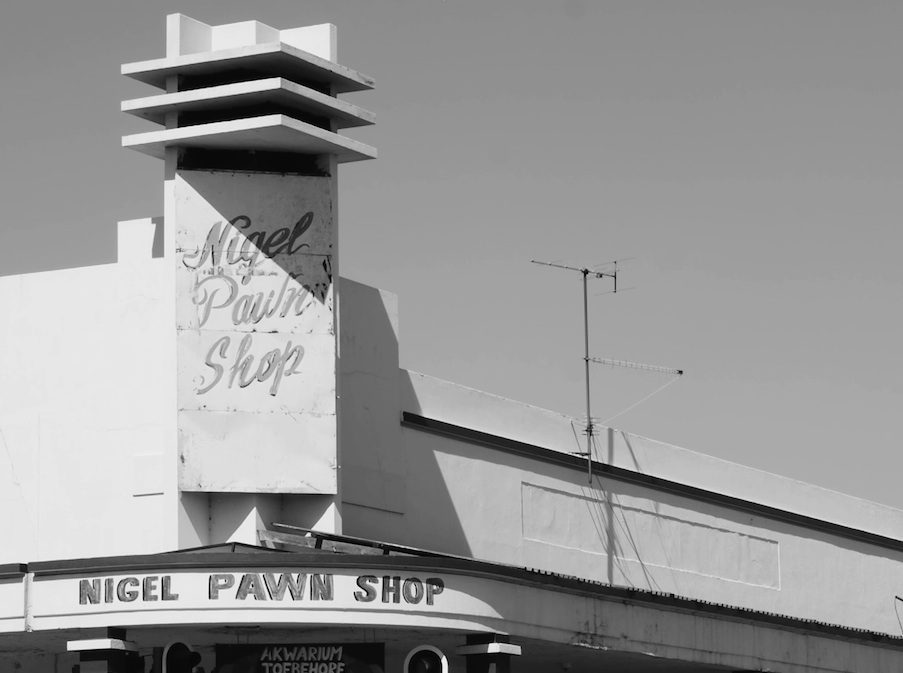Stevenson, Johannesburg, South Africa
07 May 2015 - 12 Jun 2015

'Lazy Nigel' (detail) 2015 HD video, stereo sound, DVD (endless copies) Duration 11 min 39 sec, © Simon Gush Courtesy Stevenson, Cape Town/Johannesburg
STEVENSON presents Workplace by Simon Gush. In this exhibition Gush continues his research into labour and how it regulates everyday life. From Calvinism to laziness, Gush extracts meaning from the notion of work and the beliefs that dominate our conception of productivity.
Workplace follows on from Gush’s previous show Work (Stevenson, 2013), which focused on the various ways in which work constructs our identities, alongside prevailing perceptions of work, including the ideological assertion that ‘work’ is morally ‘good’. Gush rearticulates this research with a focus on particular locations. One such place is the small town of Nigel in the East Rand of Johannesburg, which Gush visited to shoot his film Lazy Nigel. Focusing his camera on landscapes of industrial complexes and factories devoid of employees, Gush presents us with scenes of a near ghost town, where the workers have returned to their distant homes and families on the weekend, but where in small places, some semblance of everyday life and activity remains.
The second film, Calvin and Holiday, shot during a ‘working holiday’ in Geneva, focuses on the 16th-century French theologian and pastor, Jean Calvin, who could be considered the architect of the South African work ethic of the moralising of hard work – a dogma extolled by the apartheid government, echoes of which still play out in our adherence to productivity, the appearance of busyness and the visual representation of work.
In the text and photographic series, The Yellow Jersey, Gush travels to Maputo, Mozambique, where he encountered the history of the shifting mechanisms of labour and the range of forces that contributed to shaping it. The work traces these from the Voortrekker Louis Trichardt, who made the journey over the border in 1838, to the Witwatersrand Native Labour Association, Wenela, formed by the South African gold mines in 1897 to recruit workers from neighbouring countries, via the 20th century, when new lines were drawn by the Cold War and tensions arose with the self-determined Mozambique, and on to the present, where Chinese construction companies and labour remodel Maputo according to new values and ethics.
Workplace reasserts Gush’s strong interests in creating an image of and debate around the idea of work today, and creates a palimpsest of images and texts that together confront the realities and histories of labour and production in the 21st century.
The exhibition opens on Thursday 7 May 2015, 6-8pm.
Gallery hours are Monday to Friday, 9am to 5pm, and Saturday 10am to 1pm.
Gush (born 1981) lives and works in Johannesburg. He was a 2011 Fellow at the Gordon Institute for Performing and Creative Arts, University of Cape Town, and completed postgraduate studies at the Hoger Instituut van Schone Kunsten in Ghent, Belgium, in 2008. Solo shows include After Work at Galerie Jette Rudolph, Berlin (2015); Red at the Goethe-Institut, Johannesburg (2014); 1st and 3rd at Galerie West, The Hague, and 4 for Four at SMAK, Ghent (both 2010), in addition to five previous exhibitions at Stevenson, Cape Town and Johannesburg. Group shows include Artists Engaged? Maybe at Fundação Calouste Gulbenkian, Lisbon (2014); the 2nd Montevideo Biennial, Uruguay (2014); My Joburg at La Maison Rouge, Paris, and the Staatliche Kunstsammlungen, Dresden (2013); Halakasha at the Standard Bank Gallery, Johannesburg (2010); 1910-2010: From Pierneef to Gugulective, Iziko South African National Gallery, Cape Town (2010) and the 2009 Luleå Summer Biennial, Sweden. Upcoming group exhibitions include 9 o’clock, at the National Arts Festival, Grahamstown (curated by Lerato Bereng), and Red Assembly, at the African Critical Inquiry Programme Workshop 2015, East London.